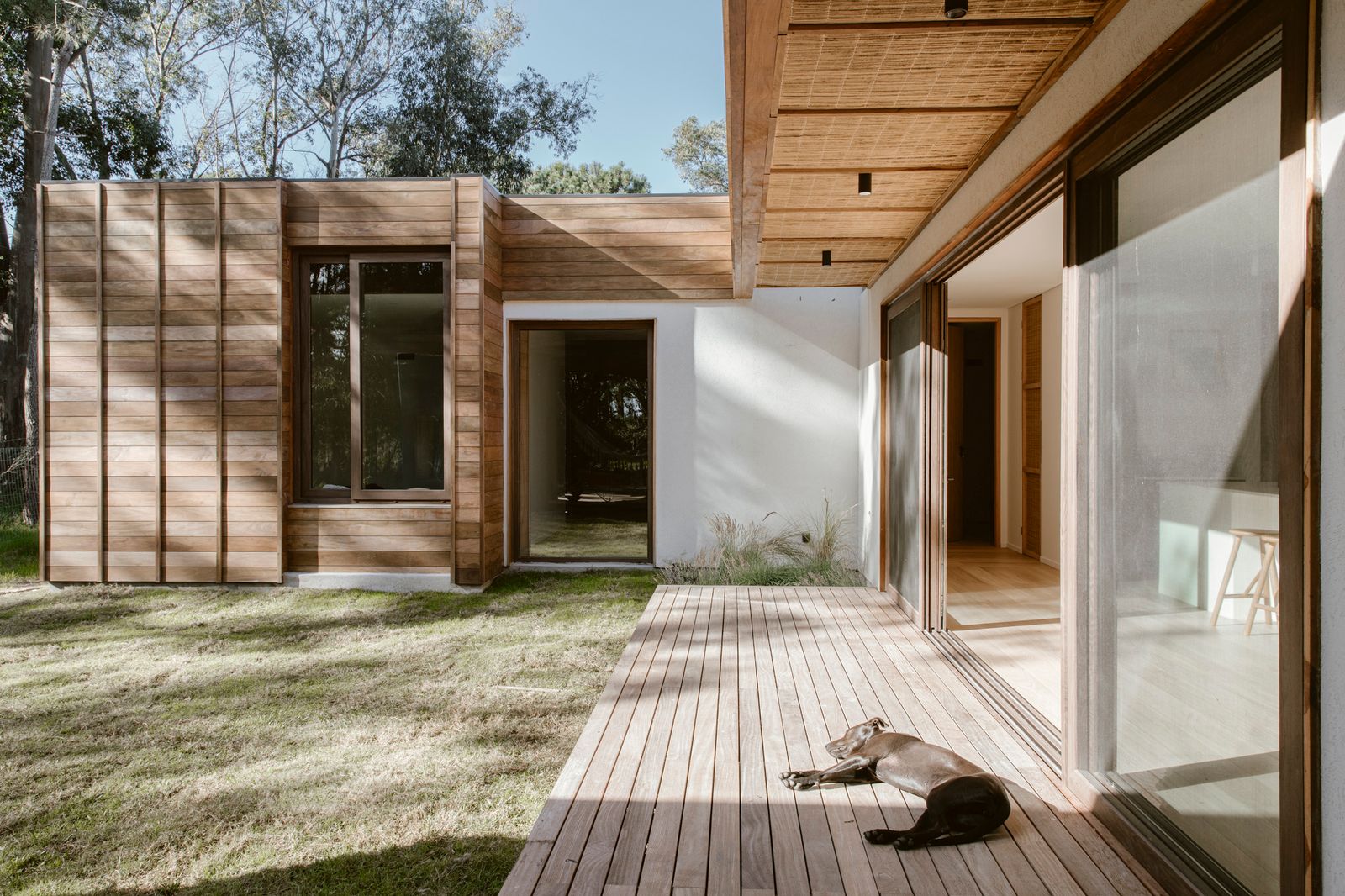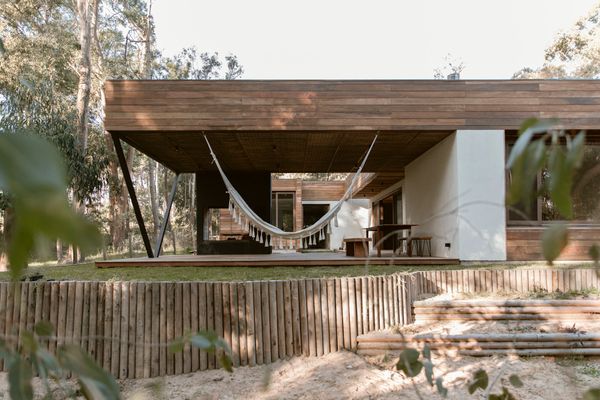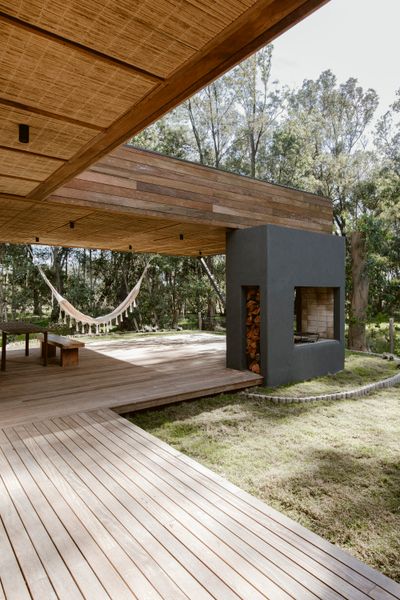Facundo Ochoa’s beach house is an ode to craft and coastal living with a sprawling deck, DIY details, and lots of room to hang out.

After living and working in Australia for six years, Argentinian architect Facundo Ochoa moved to the eastern coast of Uruguay, just outside the popular resort town of Punta del Este. He was drawn to the area’s surfable beaches—especially Playa Montoya—and the proximity to his native Buenos Aires, where he cofounded the studio NODO Arquitectura. He also saw a demand for the kind of holistic work he wanted to pursue: projects where he could participate in both the intellectual aspects of architecture and the physical labor of construction.

A side view of Facundo Ochoa’s 1,900-square-foot house, situated on a forested lot near a surfable beach in eastern Uruguay. To create a solid foundation, Facundo laid ballast over the sandy soil. During construction, he got the idea to cut dozens of eucalyptus trunks to delineate part of the sloping perimeter. “A lot of details were decided on-site,” he says.
Photo by Abori.Gen
Facundo started with his own house, a minimalist, wood-clad space on a verdant plot near Montoya’s waves. Not only did he design it, he built it inch by inch with his hands, aided by a knowledgeable neighbor and a couple day laborers. After seven months, he finished it in time to welcome home a baby girl with his wife, Catalina (it’s the couple’s first child, arriving any day now). “We’re contributing a new Uruguayan to the country,” he says jauntily. “We’ve put down roots.”

Facundo relaxes on the deck’s hammock while drinking yerba maté, a beloved local herbal infusion typically sipped from a gourd. In the afternoon, the sun sets through the eucalyptus and pine trees that surround his half-acre property.
Photo by Abori.Gen
Redefining a Legacy
My great-grandfather was a respected architect—his name was Miguel Ángel Cesari, and he was partners with Clorindo Testa [a pioneer of brutalism in Argentina]—and my father is an engineer, so all my family has been involved in construction and I sort of lived and breathed it. As a kid, I would use my hands to create things, and I built my own skate ramp. But when I became an architect, I realized that in Argentina there’s a dividing line in terms of what architects should or should not do—it’s not well-regarded to be doing any sort of manual labor.

Most homes in the area have woodburning parrillas to make asados, or barbecues. Facundo designed his own to be open on both sides, which provides extra heat to the patio during colder days. The deck is made of lapacho, and the ceilings are covered in straw. “It has a Japanese style, and also a beachy style,” he says.
Photo by Abori.Gen
See the full story on Dwell.com: Construction Diary: He Hand-Built a High-Design Surf Shack in Uruguay
Related stories:



